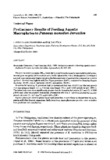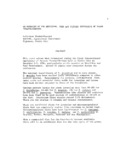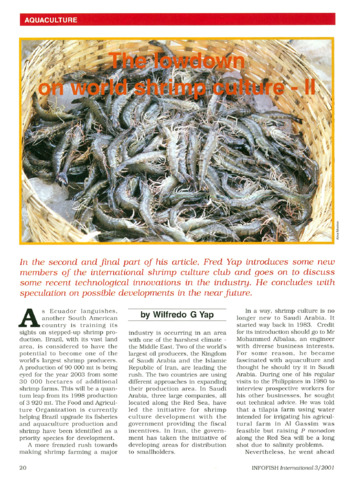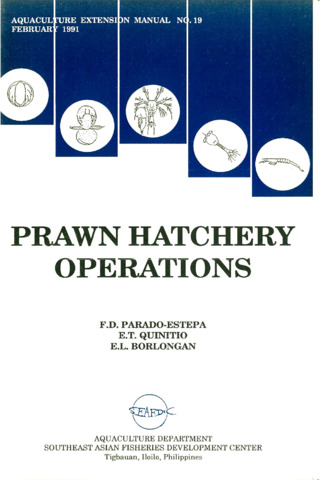Preliminary results of feeding aquatic macrophytes to Penaeus monodon juveniles

View/
Request this document
Date
1989Page views
147Metadata
Show full item recordCited times in Scopus
Share
Abstract
Penaeus monodon juveniles (PL50) were fed live and decaying aquatic macrophytes and a commercial grow-out pellet (40% crude protein) in 80-l glass tanks over a 30-day period. Growth and survival were significantly higher for juveniles fed some form of macrophyte compared to controls (pellets). Survival was highest with live Najas graminea (100%) compared to decaying Ruppia maritima (65.4%), live R. maritima (58.9%) and pellets (52.5%).
Juveniles fed decaying N. graminea had the lowest survival rate (30.6%) but the best growth (7.8 mm carapace length (CL), 37.6 mm total length (TL), and 0.2587 g body weight (BW)). The latter body sizes were significantly greater than for juveniles fed pellets (6.2 mm CL, 0.2338 g BW) and other macrophyte treatments. Prawns fed with live R. maritima showed the poorest growth (4.5 mm CL, 24.7 mm TL and 0.1070 g BW).
Aquatic plants are directly grazed by penaeid juveniles, or contribute to the detritus fed on by prawns and other benthic organisms. Aside from food, macrophytes also provide cover or shelter from predation and cannibalism.
Suggested Citation
Primavera, J., & Gacutan, R. Q. (1989). Preliminary results of feeding aquatic macrophytes to Penaeus monodon juveniles. Aquaculture , 80(1-2), 189-193. https://doi.org/10.1016/0044-8486(89)90284-6
Subject
Taxonomic term
Collections
- AQD Journal Articles [1214]
Related items
Showing items related by title, author, creator and subject.
-
An overview of the nutrition, feed and feeding techniques of prawn penaeid/shrimps
Piedad-Pascual, Felicitas (Philippine Council for Aquatic and Marine Research and Development, 1989)This paper echoes what transpired during the first International Conference of Penaeid Prawns/Shrimps held in Iloilo City in December 4-7, 1984, particularly on the Nutrition nd Feed Development. Around 25 papers were ... -
The lowdown on world shrimp culture - II
Yap, Wilfredo G. (INFOFISH, 2001)This paper introduces some new members of the international shrimp culture club and goes on to discuss some recent technological innovations in the industry, particularly the polyculture of tilapia (mainly Oreochromis ... -
Prawn hatchery operations
Parado-Estepa, Fe D.; Quinitio, Emilia T.; Borlongan, Emeterio L. (Aquaculture Department, Southeast Asian Fisheries Development Center, 1991-02)The manual, an updated version of the 1984 SEAFDEC/AQD manual, presents the underlying principles and step-by-step instructions of prawn larval and post-larval rearing. The techniques described are not only applicable to ...





